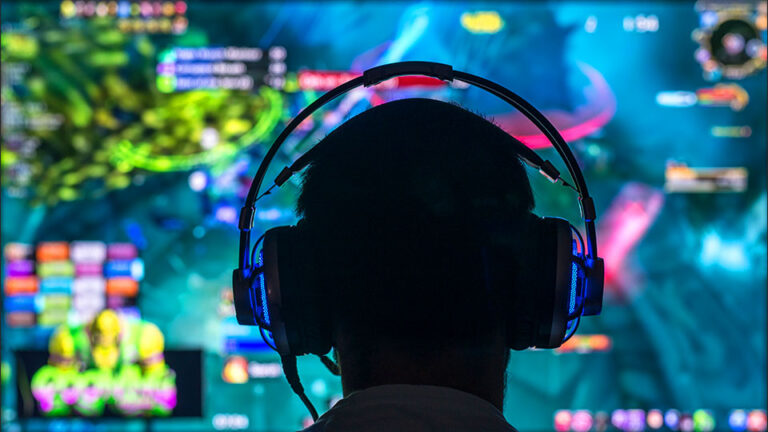Interested in entertainment design? If you like to bring worlds to life, with lots of characters and environments to traverse, then learning entertainment design may be the right program for you. You get to learn 3D drawing and rendering, traditional art styles and the production process to boot. So, what do you learn? Happy you asked.
What do You Learn During an Entertainment Design Program?
Entertainment design courses combine traditional study with the hands-on experience that aspiring artists need to get comfortable with the craft. You will learn how to bring a concept onto a page or screen. You will also get an overview of every step of the design process from story boarding to post-production. This will help you understand what is needed to bring a project to life. Here are some of the main components of the entertainment design curriculum.
Traditional Art History
Before stepping up to the digital drawing board, it is vital to understand what makes art appealing. Studying classic real-world art allows you to transfer the same principles into the digital realm. Despite the rapid advances in technology, the core tenants of art remain unshaken. Studying the legendary figures throughout the art world will inspire you to take up the mantle that has been passed down for generations.
Pre-Production
The pre-production step starts by brainstorming what you want to create before opening a practical software. Most pre-production elements like story boarding, level layouts, and scripts are drawn out by hand. You get a chance to pick up a pencil and paper to map out your ideas. Here you will learn how to predict or test if a concept is worth pursuing. Every great project needs a solid pre-production foundation.
Project Development and Pipeline
Getting familiar with the actual workflow of a digital artist is one of the main goals you will attain. This is what you will spend the bulk of your time on. Learning how to operate the hardware and software used by your studio is crucial to success. Plus, navigating the many moving pieces of a professional studio and still meeting deadlines takes some practice. That’s where project development comes in. The development process has been standardized across multiple entertainment mediums, so this portion of your education will prepare you for anything your future prospects have in store.
Post-Production
Post-production is when all the finishing touches and creative flourishes are added to make your work stand out, because modern audiences expect completed works to be polished and screen ready. Concepts such as sound effects, voice overs, editing, and everything else you need to wrap up a project is covered in post-production.
Teamwork
Last, but certainly not least, you will learn how to collaborate with others. Keeping the peace is mandatory when hundreds of team members engage in one project for multiple years at a time. That is the reality of most professional studios. Learning to communicate and compromise is the name of the game. There will inevitably be disputes and creative disagreements, but they must all be handled with professionalism and respect if you hope to reach any level of success.
Benefits of Attending an Entertainment Design Program
There are many benefits of attending an entertainment design program. Whether you want to learn at a faster pace than you would at a 4-year college, are looking for industry experienced faculty or want the option to take risks and make mistakes, then starting with an entertainment design program at a creative arts school will allow you to learn your craft so you are ready to go on day one of your first job.
Benefit #1: Learn Quick Then Start Earning
One of the benefits of attending a creative arts school is a complete and succinct curriculum. You learn quicker than a 4-year college because there are fewer elective courses, and the curriculum focuses only on what you need to know to start working after college. This means, you can start earning in less time than a 4-year college. If you don’t have 4 years to attend college, then attending a creative arts school may be the right plan of action.
Benefit #2: Industry Experienced Faculty
The faculty at a creative arts school is hand-picked from the community at large. They are well educated, experienced in their field and ready to offer one-on-one attention, so no one is left behind. Since class sizes are small, you get to ask faculty questions and enjoy mentoring within your craft. The faculty have worked in entertainment design and will help you hone your craft, so you are ready to hit the ground running after graduation.
Benefit #3: Opportunity to Try New Things
Not sure what type of entertainment design you are interested in? Want to focus on one aspect of the production process or focus only on storyboarding? With an entertainment design program, you get to learn everything about entertainment design, from start to finish. This will allow you to decide whether you want to specialize in one specific element or be a jack-of-all-trades and manage the process solo. When you have the opportunity to try new things in hands-on settings, you can learn from your mistakes in various areas.
Benefit #4: Break Things, Make Mistakes and Innovate
Silicon Valley prides itself in the saying, “Move Fast and Break Things.” This can be true during your time at a creative arts school. Not only do you get to try new things and innovate, but you can also make mistakes that you can learn from. You may even make a mistake that turns out to be a real innovation. The sky’s the limit.
Benefit #5: Step into an Entry-Level Position
When you graduate from a creative arts school, you are ready to enter an entry-level position and start working your way up the organization’s ladder. Having a degree will allow you to stand above the crowd during the initial interview process or when you are ready for a promotion. A degree in entertainment design lays a foundation that you can build upon throughout your career, so take the time to build a solid foundation and have a strong career.
Benefit #6: Networking Opportunities and Externships
Learning about entertainment design in small class sizes means you have the opportunity to really get to know faculty and classmates, making future networking connections. You never know when you will want to connect with your faculty and classmates, later on in your career. During the entertainment design program, you will also enjoy an externship at a real organization. This gives you the opportunity to shadow your potential counterpart and get real world experience in the process. An externship is also a great way to learn what you like about entertainment design and what you may want to specialize in.
Benefit #7: Career Services
The best part about attending a creative arts school is the career services. Not only are you able to build a great resume, role-play with mock interviews and have access to job boards, but you also get a Career Services Department contact that knows your individual passion. They can help you find the right job for you that matches your passion and knowledge, so you succeed from day one. Creative arts schools also have connections within the community and may hear about open positions before the public.
Final Thoughts
Now that you know what you learn during an entertainment design program, it is time to learn more about the University of Silicon Valley. We prepare you for success in the creative technology industry by providing extraordinary, real-world education inspired by the entrepreneurial spirit of our Silicon Valley location. So, take the first step in your journey and start working toward a new and exciting career in entertainment design.
Ready to get a degree and take the entertainment industry by storm? You can guide an entertainment design project from the page to the screen as you conquer every step to make a winning product. Layering color maps and shading will form the foundation of your entertainment and graphic design skills as you work toward texturing and digital painting. You’ll apply 3D techniques to drawings and renderings as you develop your own personal style in entertainment design projects. You’ll also combine traditional and digital media in elements for design and marketing, video games or animations.
Digital Art and Animation Degree Program students have access to uniquely modern facilities, including access to virtual reality and augmented reality equipment and a rendering manager built just for University of Silicon Valley.
University of Silicon Valley is uniquely poised to offer a meaningful and valuable education for 21st century students. We believe in an education that directly correlates with the work you’ll be doing after you graduate. Interested in learning more? Contact Us today.


